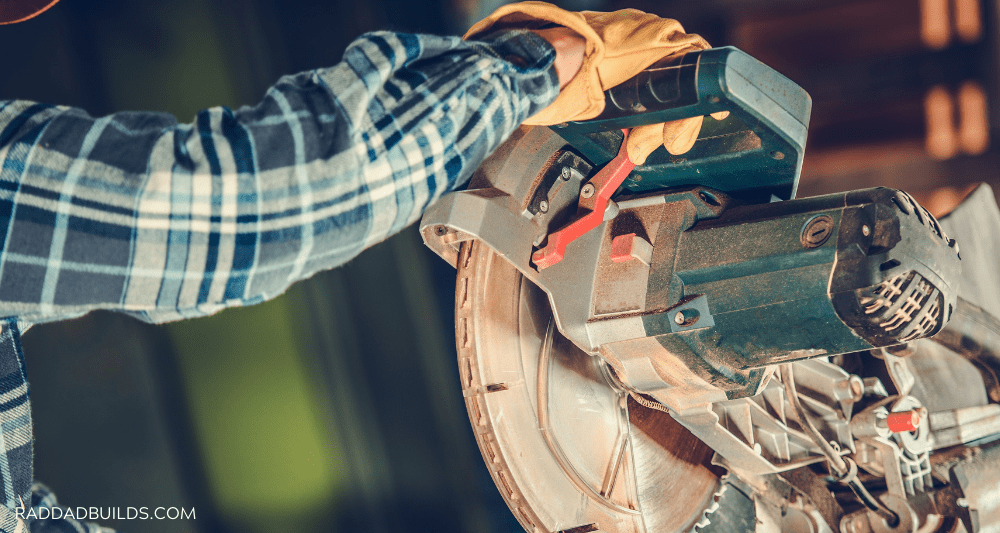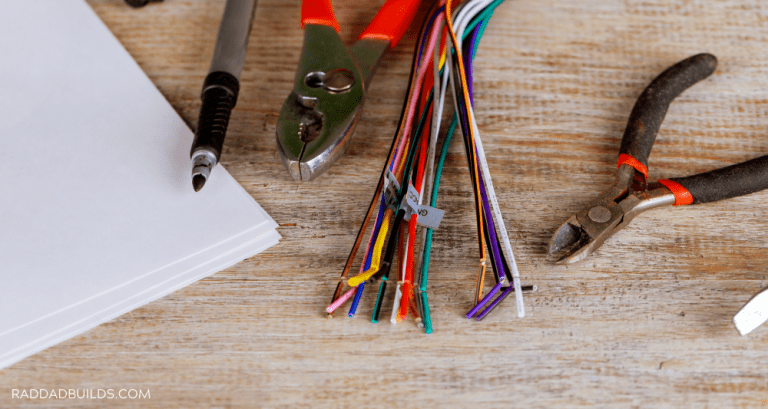Types of Saws And Their Best Uses
What are the different types of saws and their various uses? For cutting any object in solid-state, specific tools are used, such as ‘saws.’
Different types of saws are used for cutting through different solid objects like stones (marble), metallic things, and most commonly – wood (timber).
Saws are found in every toolkit, whether at home for quick fixes or outside the house for professionally trained workers, especially in the construction field.
Numerous components need to be cut with particular types of saws for the intended outcome. The saws are of different shapes and sizes. Hand saws with tough blades at one end and on the other wires and chains are intact.
This site uses ads and affiliate content, earning commission on qualifying sales. Disclosure.
While some powered saws retain a circular-shaped blade, used to slash ceramic tiles and fulfill other constructive purposes.
To realize the importance of various types of saws, let’s take an example. If you want to protect your garden by making fences around it in a harmless way, you are going to need a ‘hand saw’ for that. But if you want to make joinery like wooden interior decors, you will need a ‘back saw’ for a delicate finishing.
Hence, for any kind of work, certain equipment or tools are required. The selection of those tools depends upon the type of job you are going to perform with them. Hence, the right tool choice can make your job easier, while the wrong tool will waste your time and energy until you realize that it’s not going to take you anywhere.
In this article, we will take a look at several types of saws and their usage. Which are divided into two main categories – hand saws and powered saws.
Different Types of Saws And Their Best Uses
Table of Contents
As the name suggests, these saws are ready to use, hand-handled, and work without any additional power source requirement. Structurally, a hand saw has a gripping space with a big blade attached to its front for splitting anything into two. This saw is used diversely, for more than one means of cutting, in several niches.
Even though it is not limited to only wood-related work. Still, out of all the saws, the most commonly preferred saw for the woodwork is the hand saw. The professionally skilled carpenters and wood crafters use these types of saws.
Which allows separating the wood according to the desired piece of shape. It is generally used while creating a wooden fence by shaping the wood first and then combining the individually scoped parts into a single masterpiece.
Even for quick amendments of wooden furniture or other decorates of the house. A rough-edged, hand saw is the basic tool for all. However, other kinds of hand saws might also come in handy in different sorts of jobs.
Hack Saw
Hack saw is a type of hand saw, which has an overall rectangular C-shaped front with curved edges. The narrow blade is placed under tension with 18 to 32 teeth per inch at one side of the frame. If the cutting material is hard or difficult to cut through, a larger blade size can execute the task.
The placement of the blade can also be adjusted to this handy tool. But standardly, the blade is screw-fixed, pointing away from the handle.
The traditional blade of the hacksaw is used to cut metal due to its fine and accurate cutting style. Apart from the hard metal, it is also considered while dealing with plastic material as well. Since there are many things made out of plastic in our house, which can be mended easily with this saw.
This valuable tool is mostly found in the plumber’s toolbox for cutting the kitchen and lavatory’s conduit tubing and other pipes made out of plastic.
Back Saw
Backsaws are the types of saws, which are comparatively smaller in size. They are locally called hand saws as well. The blade has a hard rib at the back, providing firm support to the blade’s cutting part. On the one hand, a wooden stiffed rib restricts the cutting depth of the saw. On the other hand, it provides a stable control over the grip of the backsaw.
The blade is sharper and thinner for an evenly straight, neat finish. Used at distinctive degrees like 45° and 90°, the accurate style of fine cutting is used for wooden-made stuff.
This saw is mainly used for cutting miters, dovetails, and tenons in furniture, like cabinetry and another timber-made interior like joinery. Also, it is used to cut metallic items with its tightly spaced teeth per inch count.
According to the specific work, the different backsaws include the miter saw (large-sized backsaw) and Tenon saw (mid-sized backsaw).
Bow Saw
The metallic frame of the saw is shaped like a typical bow, hence the name. Bow saws are the types of saws that are particularly used for crosscutting. The effectively long blade size, with large crosscutting teeth, chop in both directions.
However, it is not recommended for wooden work. Since this portable, beginner-level tool is not a precise one. Therefore, it doesn’t offer a perfect finish to the job. A bow saw is traditionally used for outdoor tasks like trimming and pruning wet wood and logs of thick trees.
Coping Saw
Coping saws have a sharp and thin blade with an arched-shaped body. The detailed cuts make it a precision tool. Hence it is not recommended for any rough jobs. However, this saw is perfect for intricate and sophisticated work.
The blade rotation adds value in the work of trimming or anything that requires control in narrow spaces. According to the blade in use, it cuts through plastic, wooden items, metals as well. Also, it helps toy-makers for trimming synthesized materials.
Furnishing creators admire its close-up cutting quality and keep it as an essential tool in their kits. While plumbers are also on the list of users.
Crosscut Saw
Crosscut saws contain wide, beveled teeth, including a heavy blade size with uneven edges. There are two types of saws in the crosscutting field. Firstly, the common 1-man crosscut saw with one handle on the end. It is used while camping in the wild to trim branches and stems of trees and harsh lumber cuttings.
Secondly, the formal 2-man crosscut saw a handle on each end for 2 people to use in a push and pull manner. The perpendicular splits by the saw across both directions cut the grain of timber in a rough style. Mostly used for outdoor jobs.
Fret Saw
The outlook of the fret saw is somewhat similar to the coping saw. These saws have a deeply bent, curved frame, which allows the cut to be made at a wider angle beyond its boundaries. Even though the cuts made by the fret saw are complicated, the fixed blade makes the job easier.
A fret saw can work effectively in extensive undertakings. Having a non-rotational blade, which limits the use to a certain degree. However, to expect the exact outcomes as the coping saw in tight spots, the job can get a bit difficult.
Hole Saw
The hole saw has a circular-shaped blade, typically connected to a driller. These types of saws work by cutting a hole through the given material by enforcing the drill machine. Since the hole saw is needed when the spade is a bit narrow. Therefore, it has a pilot drill function to keep the saw teeth together in one place.
And thus, it performs all the complex tasks efficiently. The depth of cutting during the drill is determined by the blade type and the blade size of the saw. However, to cut through a harder material by a bi-metal hole saw, the professionals prefer carbide or diamond coated teeth to create a flawlessly round hole in the core element.
The drilling operation allows even the smaller hole to be made without breaking through the source material entirely. A hole saw is commonly used to drill a neat, round, and effortless hole in the concrete, walls, wooden items, plastic, metallic objects, stainless steel, and other elements.
Japanese Saw
Japanese saw is a precisely fine tool with a single handle for a rigid command over the gadget. The cutting finish is more detailed than the backsaw. These saws have extended powerful and thin blades, which are utilized for the most explicitly neat results.
Japanese saws are of three types. Namely, Kataba, Dozuki, and Ryoba, offering a high class of finest blades of all.
Another advantage of these types of saws is that they can surpass closed areas where other saws are troublesome to use. Japanese saws are used to cut woods of both soft and tough texture with identical accuracy.
Keyhole Saw
These types of saws have a resembling outlook of a long knife. A keyhole saw has a single tapered, prolonged blade attached to the top of the round handle. They are used to displace and extract small segments from the essential concrete drywall.
Therefore, it is the best option to create patterns using its sharp and pointed blade for creativity purposes. It can also be used instead of powered tools, where heavy drilling can harm the delicate interior of the wall.
The plumbing work needs the keyhole saw to accommodate pipes by making holes in the wall for purely minor sections. Hence, it is a rapid and lenient indoor problem solver.
Pruning Saw
The pruning saw has a 13 to 15 inches long blade with a slightly bent or curved structure. The outlook of these types of saws is similar to that of a ‘pistol,’ offering a single handle, a pistol-style grip.
The teeth are raw with a wide blade, which enables the saw to cut in both ways. That’s how it acts at a timely pace and handily wipes out material from the given surrounding source. A pruning saw is widely used by all landscapers and is considered a house owner’s biggest helper.
The tree surgeons and keen gardeners also admire the saw for its portable assistance in cutting the easily accessible, short branches of the trees.
Pole Saw
Pole saw consists of a long pole, hence the name. It is also known as a pole runner. The normal range of the pole depends on the selection of the model. Generally, it has a range of 7 to 16 inches and is available in higher lengths. The new models of pole saws are now electrically powered, having an end like the chainsaw.
These types of saws are constructed for pruning the branches of the trees. A pole saw has a comprehensive 6 to 8-inch chopping blade. Which makes it ideal to become every gardener’s dream tool.
The saw authorizes the owner to stretch up to those out-of-reach branches without the need to climb up a ladder. Overall, it’s an outdoor tool for lawn courtesies.
Rip-Cut Saw
Out of all the types of saws, rip-cut are the most popular ones. It is even recognized by those who cannot distinguish it among many other saws. Locally, many people call it a generic hand saw. Rip-cut saws are functional in various sizes.
The blades are extremely fine and sharp. They are also powerful enough to subtract the utmost amount of excess material from the given element. Its blade has a tooth count of about five teeth, which is comparatively lesser than others. A rip-cut saw is ideally terrific for framing due to its explicit finishing.
The new woodworkers and carpenters keep a rip-cut saw in their tool bag for its classical design and shape.
Wallboard Saw
A wallboard saw has an outlook similar to that of a keyhole saw. The difference between both is trivial and is observed only in the blade shape. The saw has limited and tapered teeth per inch. Its blade has a thicker and shorter body.
A wallboard saw is also available in a double edge variation. These saws are designed to create hole patterns in the wall, as the name gives it away.
It carves initial holes for power saws. It is utilized by electricians for wiring or paneling by puncturing through substantial drywall.
Veneer Saw
A veneer saw is a highly specialized and unusual saw. It consists of a short blade, having a double-edged distinction, with a round handle to hold. There are 13 teeth per inch present on each side of the blade.
A veneer saw is mainly used for executing veneer work. These types of saws are only found in the tool bag of highly experienced carpenters or wooden craftsmen.
Since it is not handily flexible to other practices. An average person or enthusiast will not have much to do with it.
Powered Saws
Instead of following the footsteps of various hand saws, powered saws have elevated the bar to the next level by establishing a niche of their own.
For instance, a radial arms saw broadened a circular saw and miter’s abilities rather than duplicating it. Therefore, after going through several hand saws, let’s also take a peek at some of the powered saws as well.
Chain Saw
A chain saw is one of the most powerful tools out there, undisputedly. It is the first and foremost go-to cutting tool for all forestry workers. Even some house owners who enjoy doing their fixtures and repairs on their own keep it in their house for quick use.
It operates by a spinning process of the chain link around the powered arm, running at a certain acceleration. It comes in a variety of optional power source choices, like petrol and electricity. But the most preferred chain saw is the one with the petrol power source.
A chain saw is highly recommended for people who live in the middle of a wooded area. Forestry workers admire this saw for its extraordinary ripping through anything quality.
Circular Saw
A circular saw is also known by the popular brand name Skilsaw. Or sometimes called a buzz saw.
These saws can either be mounted to a rotational machine or be handheld. It has many means of powering sources like the gasoline engine, the most commonly available, electricity. But the hydraulic motor is the most effective means of power source, out of all.
These saws have a tooth count ranging from 7 to 9 inches, which is measured in diameters. The teeth are placed on the blade to sharpen its edge and make it rip through any rigid thing.
The materials it can cut through are masonry, metals, plastic, wood, and much more. Hence, the saw is counted among the most basic types of powered saws.
Chop Saw
One of the biggest convenient versions of circular saws is chop saws. Which are also known as abrasive saws. Locally they are called cutoff saws and concrete saws. The multiple names are given after the variable functions it performs.
The arrangement shows a spinning disc, ascended on a support arm, without any toothed blade. These types of saws are created in two cutting versions, which are masonry and metal.
The concrete cutting saw generates a lot of dust in the air while slicing through the material. Therefore, a water connection line is built to reduce the dust quantity in the surroundings.
Types of Saws And Their Best Uses – Conclusion
Knowing the different types of saws can be an asset itself. So at the time of need, you know which tool to use and what job it is fit to execute.
Saws are a must-have tool in your tool kit, whether you are a homeowner or a professional worker. Normally, people have a hard time identifying the right saw since there are multiple of them. After reading this article, we hope you will distinguish between, if not all, then at least some of the saws found in the marketplace.


